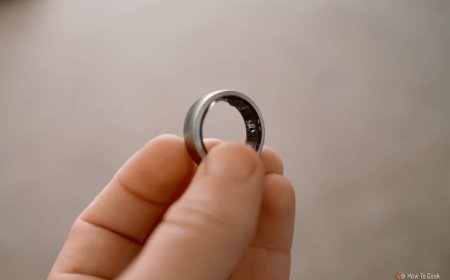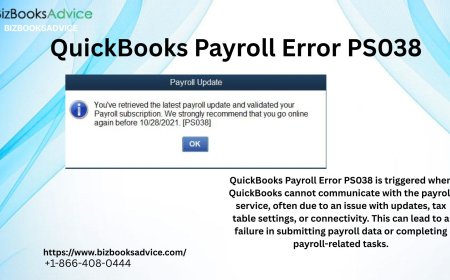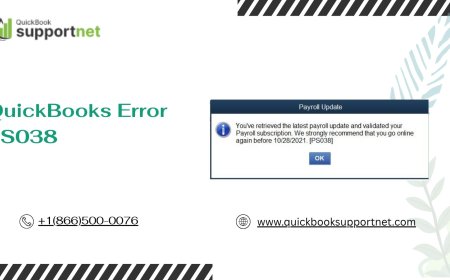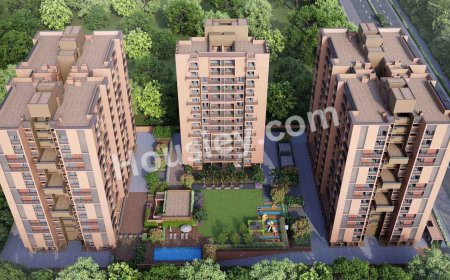Common Wiring Issues in Older Irrigation Timers

Irrigation timers, also known as sprinkler controllers, are the brains of an automated sprinkler system, dictating when and how long each zone waters your lawn or garden. In older systems, particularly those installed a decade or more ago, wiring issues can become a significant source of frustration. These problems can cause zones to malfunction, sprinklers to stop working entirely, or schedules to run erratically. Understanding the common wiring issues in older irrigation timers can help you diagnose problems, perform basic repairs, and know when to call a professional. In this article, well explore the most frequent wiring issues in older irrigation timers, their causes, symptoms, and solutions, along with tips for maintaining your system.
Why Older Irrigation Timers Are Prone to Wiring Issues
Older irrigation timers, typically installed in the 1980s to early 2000s, rely on wired connections to control zone valves and communicate with sprinkler heads. Over time, these wires and components are exposed to environmental factors like moisture, heat, cold, and soil movement, which can degrade their performance. Additionally, older systems may not meet modern standards for wiring insulation, grounding, or connectivity, making them more susceptible to issues. Common causes of wiring problems include:
-
Aging Materials: Wires and connectors degrade over time, leading to corrosion or fraying.
-
Environmental Exposure: Outdoor controllers are exposed to rain, humidity, and temperature fluctuations, which can damage wiring.
-
Improper Installation: Older systems may have been installed with substandard wiring or poor connections, leading to long-term issues.
-
Physical Damage: Wires buried underground can be damaged by digging, rodents, or tree roots.
-
Obsolete Technology: Older timers may lack modern features like surge protection, making them vulnerable to electrical issues.
By recognizing the signs of wiring problems, you can address them before they cause significant disruptions to your irrigation system.
Common Wiring Issues in Older Irrigation Timers
Below are the most common wiring issues found in older irrigation timers, along with their symptoms and solutions.
1. Corroded or Loose Wire Connections
Corrosion is a frequent issue in older irrigation timers, especially those installed outdoors or in damp environments. Moisture can seep into the controllers terminal strip, where wires connect to the timer, causing corrosion that disrupts electrical signals. Loose connections, often due to improper installation or vibration over time, can also prevent the timer from communicating with zone valves.
Symptoms:
-
Zones fail to turn on or off as scheduled.
-
The controller displays erratic behavior, such as random zone activation.
-
Visible rust, green corrosion, or white powdery residue on terminal connections.
-
Intermittent operation of specific zones.
What to Do:
-
Turn off power to the controller to avoid electrical shock.
-
Open the controller and inspect the terminal strip for corrosion or loose wires.
-
Clean corroded terminals with a wire brush or sandpaper, and replace severely damaged wires.
-
Tighten loose connections with a screwdriver, ensuring wires are secure but not overtightened.
-
Apply waterproof wire connectors or dielectric grease to prevent future corrosion.
-
If corrosion is extensive, consider replacing the terminal strip or the entire controller.
2. Damaged or Cut Underground Wires
Wires connecting the irrigation timer to zone valves are often buried underground, making them vulnerable to damage from digging, lawn aeration, or rodent activity. A cut or frayed wire can disrupt communication between the timer and one or more valves, causing zones to malfunction.
Symptoms:
-
One or more zones fail to activate entirely.
-
The controller shows no error, but specific valves dont open.
-
Physical signs of damage, such as exposed wires or disturbed soil along the wire path.
What to Do:
-
Use a multimeter to test continuity in the suspected wire, identifying breaks or shorts.
-
Trace the wire path from the controller to the valve, looking for signs of digging or damage.
-
If the wire is cut, splice it using waterproof wire connectors or replace the damaged section.
-
For extensive damage or difficulty locating the break, hire a professional with a wire locator tool.
-
Bury new or repaired wires at least 68 inches deep to protect them from future damage.
3. Faulty Common Wire
The common wire connects the irrigation timer to all zone valves, completing the electrical circuit. If the common wire is damaged, loose, or disconnected, multiple zones (or all zones) may fail to operate, even if the zone-specific wires are intact.
Symptoms:
-
Multiple zones fail to turn on, but the controller appears to function normally.
-
No voltage reading between the common terminal and zone terminals when tested with a multimeter.
-
Corrosion or disconnection at the common wire terminal in the controller.
What to Do:
-
Check the common wire connection at the controllers terminal strip for looseness or corrosion.
-
Test the common wire for continuity using a multimeter, from the controller to each valve.
-
Repair or replace the common wire if damaged, using waterproof connectors.
-
If the common wire is buried and difficult to access, consult a professional to trace and repair it.
4. Short Circuits or Electrical Surges
Short circuits occur when wires touch each other or a conductive surface, causing the controller to malfunction or shut down. Electrical surges, often from lightning or power fluctuations, can also damage the controllers wiring or internal components. Older timers often lack modern surge protection, making them more vulnerable.
Symptoms:
-
The controller shuts off or resets unexpectedly.
-
Burn marks, melted wires, or a burning smell near the controller.
-
Zones activate erratically or not at all.
-
The controllers fuse is blown or circuit breaker trips.
What to Do:
-
Turn off power to the controller immediately to prevent further damage.
-
Inspect wires for signs of melting, burning, or exposed copper.
-
Replace the controllers fuse if blown, and test the system.
-
Install a surge protector if one is not present, or upgrade to a modern controller with built-in surge protection.
-
For severe electrical damage, replace the controller and consult an electrician to check your homes grounding.
5. Improper Wiring During Installation or Repairs
Older systems may have been installed or repaired by DIYers or unqualified technicians, leading to incorrect wiring configurations. For example, zone wires may be connected to the wrong terminals, or the common wire may be improperly grounded.
Symptoms:
-
Zones activate at the wrong times or not at all.
-
The controller shows incorrect zone assignments or erratic behavior.
-
Wires are connected to the wrong terminals or bundled haphazardly.
What to Do:
-
Review the controllers wiring diagram (often found in the manual or on the controllers cover).
-
Verify that each zone wire is connected to the correct terminal and the common wire is properly grounded.
-
Reorganize and secure wires using wire clips or ties to prevent future confusion.
-
If the wiring is too complex or unclear, consult a professional to rewire the system correctly.
6. Aging or Degraded Wire Insulation
Over time, the insulation on wires can crack, fray, or degrade due to UV exposure, moisture, or soil chemicals. This can lead to short circuits, signal loss, or intermittent operation, particularly in buried wires.
Symptoms:
-
Intermittent zone operation or random failures.
-
Visible cracks, fraying, or discoloration on exposed wires.
-
Electrical shocks when touching the controller or valves (indicating a grounding issue).
What to Do:
-
Inspect accessible wires for signs of insulation damage.
-
Replace degraded wires with modern, weather-resistant irrigation wire (e.g., UF-rated wire).
-
Use waterproof connectors for all splices to protect against moisture.
-
For buried wires, consider replacing the entire run to ensure long-term reliability.
7. Controller Malfunction Due to Wiring Issues
In some cases, wiring issues can damage the irrigation timer itself, causing it to malfunction. For example, a short circuit or surge can fry the controllers circuit board, while corrosion can disrupt its ability to send signals to valves.
Symptoms:
-
The controller display is blank, flickering, or shows error codes.
-
No zones activate, even with proper wiring.
-
The controller fails to respond to manual or programmed commands.
What to Do:
-
Test the controllers power supply with a multimeter to ensure its receiving voltage (typically 24V AC for irrigation timers).
-
Check for internal damage, such as burnt components or corrosion on the circuit board.
-
If the controller is damaged, replace it with a modern model compatible with your system.
-
Before installing a new controller, address any underlying wiring issues to prevent future damage.
Diagnosing Wiring Issues in Older Irrigation Timers
To pinpoint the cause of a wiring issue, follow these steps:
-
Turn Off Power: Disconnect the controller from its power source to avoid electrical shock.
-
Inspect the Controller: Open the controller and check for loose, corroded, or damaged wires. Look for signs of water intrusion or burnt components.
-
Test with a Multimeter: Use a multimeter to check for continuity in zone and common wires, and verify voltage at the controller and valves.
-
Run a Manual Test: Activate each zone manually via the controller to identify which zones are affected.
-
Trace Wires: Follow the wire path from the controller to the valves, looking for signs of damage or disturbance.
-
Check Valves: Inspect valve solenoids for proper connection and functionality, as valve issues can mimic wiring problems.
-
Document Findings: Note which zones are affected and any visible issues to help narrow down the cause.
Preventing Wiring Issues in Older Irrigation Timers
Preventing wiring problems can extend the life of your irrigation timer and ensure reliable operation. Here are some tips:
-
Use Waterproof Connectors: Always use waterproof wire nuts or connectors for outdoor or buried wires to protect against moisture.
-
Install Surge Protection: Add a surge protector to your system to guard against lightning or power surges.
-
Seal the Controller Box: Ensure the controller is housed in a weatherproof enclosure, and check seals regularly for wear.
-
Bury Wires Properly: Bury wires at least 68 inches deep in conduit or protective sleeving to prevent physical damage.
-
Schedule Regular Maintenance: Inspect your system annually, cleaning terminals, checking wires, and testing the controller.
-
Upgrade Aging Systems: If your timer or wiring is over 1520 years old, consider upgrading to a modern controller with better durability and features like Wi-Fi connectivity.
When to Call a Professional
While some wiring issues, like cleaning corroded terminals or tightening connections, can be handled by homeowners, others require professional expertise. Contact an irrigation specialist or electrician if you encounter:
-
Extensive wire damage or underground breaks.
-
Electrical issues like short circuits or blown fuses.
-
A malfunctioning controller that doesnt respond to repairs.
-
Complex wiring configurations or outdated systems needing an overhaul.
Professionals have specialized tools, such as wire locators and advanced multimeters, to diagnose and repair issues efficiently.
Conclusion
Wiring issues in older irrigation timers can cause significant disruptions, from zones failing to activate to erratic system behavior. Common problems like corroded connections, damaged wires, faulty common wires, and electrical surges are often the culprits. By understanding these issues and their symptoms, you can take steps to diagnose and fix them, whether through simple repairs like cleaning terminals or more complex tasks like replacing wires. Regular maintenance, proper installation practices, and timely upgrades can prevent wiring problems and keep your sprinkler system running smoothly. If youre unsure about tackling a wiring issue, dont hesitate to call a professional to ensure your system remains reliable and efficient, keeping your lawn and garden healthy for years to come.































